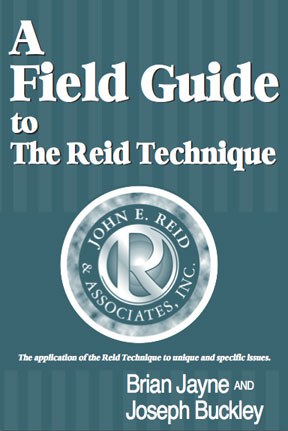A FIELD GUIDE TO THE REID TECHNIQUE

This new 427 page reference text offers detailed information applying the Reid Technique to unique and specific issues encountered during the course of an investigation
Preface
Since 1998 the authors have written articles called "web tips" which were posted on the website of John E. Reid and Associates. These web tips covered topics ranging from behavior symptom analysis and interviewing techniques to interrogation procedures and updates on legal decisions. In total, more than 130 web tips have been posted. The spontaneity of the Internet allowed the authors to address contemporary issues and maintain updated information on detection of deception research and case law.
The topics of many of these web tips were selected as a result of questions asked by participants attending our three or four day training seminars on the Reid Technique of Interviewing and Interrogation. Consequently, they address issues investigators frequently encounter when conducting interviews or interrogations. This field guide was developed to organize and index information from these articles in a manner that allows investigators to efficiently find answers to common questions relating to interviewing and interrogation practices and issues.
Additionally, this field guide serves as a resource to refresh and reinforce our readers with some of the fundamental information learned during our seminars, while at the same time expanding on that material with some advanced concepts. The information within these articles represents our most current views on interviewing and interrogation, as well as addressing the most recent court decisions and expert opinions relating to The Reid Technique.
In preparing this Field Guide, we have assumed that the reader has some familiarity with the Reid Technique, either by having attended one of our training programs or by reading our text book, Criminal Interrogation and Confessions, 5th edition, 2013. If the reader has not done either, some of the material may not be understood in the proper context.